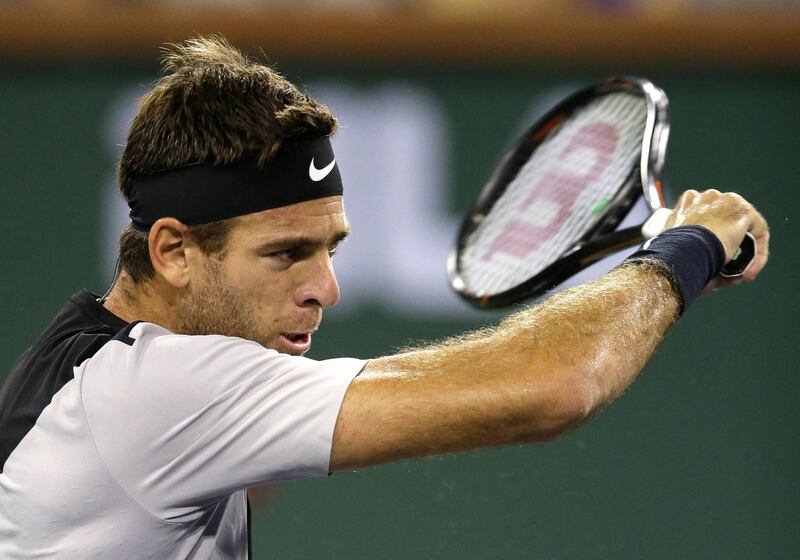At the ongoing Masters 1000 tournament at Indian Wells, much of the focus is on Roger Federer. It’s quite understandable, really. He is the world No 1, defending champion and the biggest superstar tennis has ever produced.
The runner-up in the attention stakes goes to a group of players conspicuous by their absence. World No 2 Rafael Nadal, former top-ranked Andy Murray, and three-time major winner Stan Wawrinka are all missing, thus diluting the star power on show.
Novak Djokovic was there, but the 12-time grand slam winner wilted in the California desert, losing in the first round after a performance that highlighted a desperate lack of match fitness following his long-term elbow injury.
Beyond those tried and trusted names, though, there isn’t too much to shout about, not in terms of proven pedigree and household names that can draw the casual fan into the stadium. Plenty of quality players for sure, but none that carry the aura of Federer, Nadal, et al.
______________
Read more:
[ WTA round-up: Kasatkina 'outsmarts' Wozniacki at Indian Wells ]
'Explosive' Federer rolls into fourth round at Indian Wells
Serena Williams beaten by sister Venus at Indian Wells
______________
That is no slight. There can only be so many superstars, and it’s unfortunate that so many crowd-pullers are injured or absent at the same time.
There is, however, one player at Indian Wells who, were it down to a different set of circumstances, would almost certainly be mentioned alongside the Swiss and other members of the so-called “Big Five”.
Juan Martin del Potro has endured one of the most painfully frustrating tennis careers in recent times. The Argentine skyrocketed to the upper echelons of the ATP Tour, winning the US Open in 2009 where he became the first player to beat Nadal and Federer consecutively at a grand slam tournament. He was only 20.
Before his New York heroics, a teenage Del Potro became the first player in ATP history to win his first four career titles in as many tournaments. At the same time, he put together the second-longest win streak by a teenager in the Open era, falling one short of Nadal’s record of 24.
Lethal @delpotrojuan forehand in action...#BNPPO18 pic.twitter.com/9DGMbcNaPi
— Tennis TV (@TennisTV) March 13, 2018
By January 2010, Del Potro, then 21, was ranked No 4 in the world, and the tennis world rightly revelled in the arrival of the sport’s next big star.
What followed was a nightmare six-year stretch blighted by a succession of wrist injuries. Numerous attempted comebacks ultimately proved fruitless as the Argentine began to seriously consider the prospect of a premature retirement.
Thankfully, Del Potro, now 29, persevered. He began his renaissance in January 2016, ranked No 1,041 in the world. In the space of two years, he had re-entered the top 10 and currently sits eighth – almost back to where he belongs.
What has made Del Potro’s revival even more remarkable is much of it has been accomplished without the use of one of his previously most fearsome weapons. The Argentine, pre-wrist injuries, was in possession of arguably the best backhand in the game, a thunderous double-handed stroke with which he could unload winners at will from across the court.
There are recent signs that the power is starting to return, but Del Potro has had to remodel his backhand, largely relying on slice to elongate points with the aim of creating opportunities for his even more dangerous forehand to inflict the damage.
Del Potro once said slice was “not my game”, but he has incorporated the tactic into a revised gameplan, comfortably trading in longer rallies, forcing his opponent back to open up the angles and waiting for the right moment to pull the forehand trigger.
Indeed, his diminished backhand has had other positive ramifications in his game, most notably a much-improved serve that now deserves to be mentioned alongside the best in the world.
Throughout most of the past two years, Del Potro, who won silver at the 2016 Rio Olympic Games and inspired Argentina to the Davis Cup the same year, was very much considered a dangerous opponent. He was the sort of guy top seeds would want to avoid in the early rounds, but never really thought of as a legitimate title contender at the big tournaments.
That needs to change now. Del Potro entered Indian Wells having won the Mexican Open, dismantling three top 10 players en route to the title. The second half of last season also produced some telling victories, none more so than his four-set defeat of Federer at the US Open. Del Potro is an elite contender once again.
Concerns will continue to linger with regards to his fitness, and he will need to carefully and strategically select his schedule, but this prolonged spell without a wrist-related long-term layoff hopefully suggests Del Potro has put that nightmare behind him.
He may feel he needs a second grand slam title to validate his return to the elite, but there is no disputing the fact that Del Potro is back.
Before long, expect that exclusive club to be renamed the “Big Six”.





